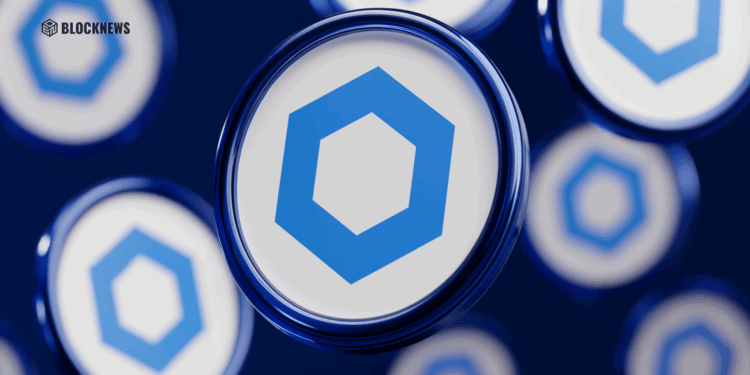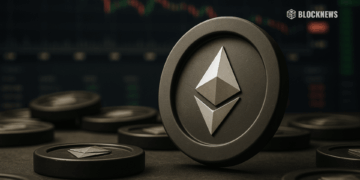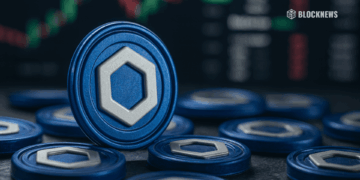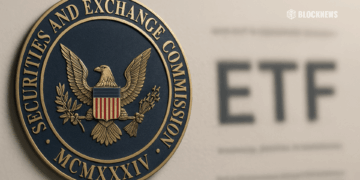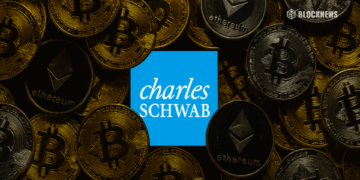- Chainlink launched the Chainlink Reserve, creating enforced scarcity by locking up accumulated LINK.
- Institutional adoption, CCIP growth, and major enterprise deals strengthen LINK’s long-term position.
- With exchange reserves dropping and whales buying, LINK could be gearing up for a 10× run in the next altcoin cycle.
What if I told you one of the most important projects in crypto just made a move that could set it up for a 10× run in the next altcoin season? And no—it’s not a meme coin, not the flavor of the week. It’s Chainlink. The quiet infrastructure project that powers half the industry might’ve just changed its trajectory with one major announcement: the Chainlink Reserve.
This isn’t hype for the sake of hype. It’s token economics, enterprise adoption, and market timing all colliding at once. And if you’ve been ignoring LINK for shinier plays, you may want to take another look.
Chainlink Launches the Reserve — And Why It Matters
Here’s the headline: Chainlink launched an on-chain reserve fund. But this isn’t just another treasury wallet. It’s a self-sustaining pool that accumulates LINK tokens automatically. How? Through Payment Abstraction—a system that lets users and enterprise partners pay in stables, ETH, or other assets. The backend then converts those payments into LINK and routes it into the reserve.
Within days of launch, the reserve had already soaked up over $1 million worth of LINK, and here’s the kicker: no plans to sell, no short-term movements. It’s locked for years. In other words, enforced scarcity, baked into the system.
The market noticed immediately. LINK ripped 7–10% on the news, breaking above $23. Analysts flagged whales accumulating, institutional wallets added millions, and exchange reserves dropped by around 33 million LINK. That’s the kind of supply shock narrative that traders love—scarcity on one side, demand ramping on the other.
A Quick Refresher: What Is Chainlink, Really?
Chainlink’s one of those projects you probably use every day without realizing it. At its heart, it’s an oracle network—a way for blockchains to connect to the outside world. Smart contracts can’t just pull in real-time stock prices, sports scores, or weather data. They live in a closed loop. Chainlink solves that by delivering secure, decentralized data feeds that DeFi and Web3 apps rely on.
Aave? Synthetix? Most of the DeFi giants use Chainlink under the hood. Billions of dollars move through protocols that need accurate data, and Chainlink’s node operators keep those pipes clean. That’s why it’s often called “the plumbing of Web3”—never flashy, but absolutely essential.
And the plumbing has expanded. Chainlink now offers Proof of Reserve for stablecoins, CCIP (Cross-Chain Interoperability Protocol) for moving data and assets across blockchains, and even integrations with heavyweights like SWIFT and JPMorgan. It’s not just a crypto project anymore—it’s an infrastructure layer for the future of global finance.
Why Chainlink Is So Critical to Crypto
Blockchains are powerful, but they’re blind. They can’t see the outside world. That’s why Chainlink matters—it’s the bridge. Without it, lending markets like Aave couldn’t liquidate safely. Insurance protocols couldn’t trigger payouts based on real-world events. Stablecoins couldn’t reliably prove reserves.
Think about it: DeFi without reliable data is just a ticking time bomb. Chainlink removes that risk. Its decentralized oracle network pulls info from multiple sources, verifies it, and delivers tamper-proof feeds that smart contracts can trust.
Now, zoom out. As crypto moves toward tokenized real-world assets, institutional adoption, and regulated finance, the need for trustworthy data infrastructure grows even bigger. This isn’t just about keeping DeFi stable—it’s about powering tokenized treasuries, cross-border payments, and eventually the digital rails of the global economy.
What’s Next on the Roadmap
Chainlink isn’t standing still. Their roadmap is stacked with upgrades and expansions:
- Chainlink Runtime Environment (CRE): A modular toolkit for building enterprise-grade workflows. Data feeds, APIs, cross-chain messaging—all stitched together in one developer environment.
- Staking Expansion: Moving toward larger, uncapped pools so more users can lock up LINK for security and rewards.
- Automated Compliance Engine (ACE): Smart contracts with baked-in KYC/AML support—making it easier for regulated institutions to adopt blockchain tech.
- CCIP Growth: Already securing 50 blockchains and $24B+ in transfers, CCIP is quietly becoming the standard for interoperability.
- Enterprise Partnerships: From SWIFT to Fidelity to government pilot programs, Chainlink is deepening its ties to traditional finance at the same time it’s scaling Web3-native infrastructure.
Put all that together, and you get a project that isn’t just building for the next cycle—it’s building for the next decade.
Price Outlook: Can LINK Really Hit $10 (and Beyond)?
Right now, LINK trades in the $15–$20 zone. With the Reserve soaking up supply, whales accumulating, and exchange balances falling, it wouldn’t take much to push LINK toward $10 as a firm support level in the next altcoin season. And from there? It could get interesting fast.
History is worth noting. In the 2020–2021 cycle, LINK went from under $2 to above $50. That’s a 25× run during a bull market that, honestly, was far less institutional than the one forming now. If the market turns risk-on again and narratives like tokenization, interoperability, and institutional adoption take off, LINK has the fundamentals to lead the pack.
Is $10 realistic? Absolutely. Could it reclaim its all-time high? In the right conditions, yes. And if things get frothy like past cycles, a move well past that isn’t impossible.
Chainlink as the Quiet Giant
Chainlink has always been a project that runs in the background while others grab the headlines. But with the launch of the Chainlink Reserve, it’s finally making moves that highlight its strength, not just its necessity. The combination of enforced scarcity, enterprise adoption, and alignment with the biggest narratives of this market cycle makes LINK one of the most compelling large-cap plays out there.
While others chase the coin of the week, Chainlink is quietly building the infrastructure that powers everything else. And in crypto, the projects with real utility and strong tokenomics tend to outlast—and outperform—the noise.
If altcoin season really hits, don’t be surprised if LINK isn’t just along for the ride, but leading it.


